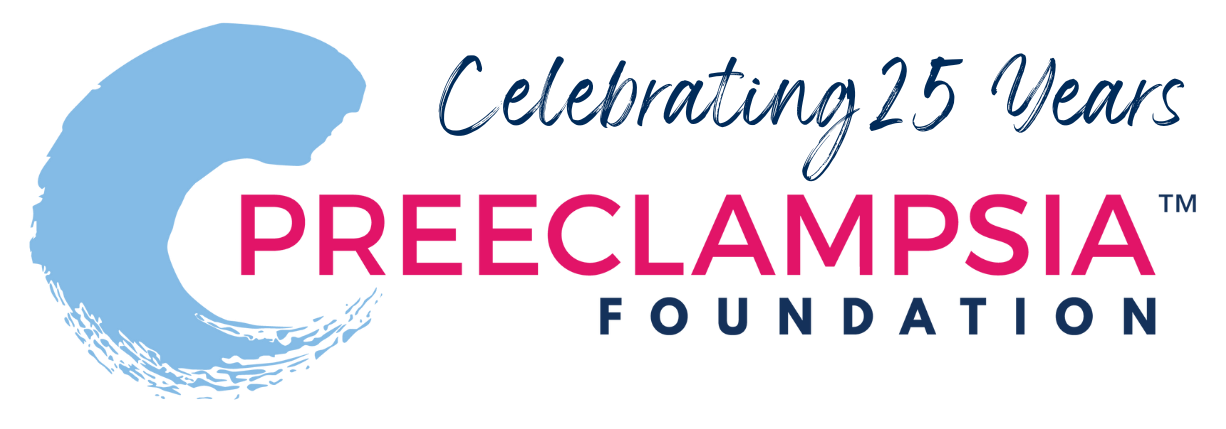
Cause of Preeclampsia
Last Updated on December 14, 2021
Plausible theories focus on the placenta
Preeclampsia was once called “the disease of theories,” but research efforts this past decade have produced exciting breakthroughs that may bring us closer to causality, improve diagnosis and even prediction, and lead to prevention and/or specific treatments. Some speculation remains over different theories including: changes in biology of the placenta, the systemic inflammatory response, a variety of hormones and other proteins that are in the mother’s circulation, changes in immune factors, improper cardiovascular adaptations to the pregnant state, underlying maternal risks for cardiovascular disease, associations with insulin resistance and diabetes, and deficiencies in essential nutrients, minerals, and vitamins.
The most plausible theories on the cause of preeclampsia focus on the placenta and describe the disorder in two stages. The first stage happens as the placenta first develops. The placenta produces factors (e.g., specific proteins, placental “debris”) that enter the maternal circulation and are believed responsible for producing the second stage. These issues appear during the second half of pregnancy and result in the visible maternal “disease” (high blood pressure, kidney, liver, brain, and coagulation abnormalities) as the growing baby and its placenta demands more resources from the mother's body. The overt disease depends not only on the action of the circulating factors from the placenta, but also the health of the mother, including diseases that may affect the vasculature (such as preexisting cardiovascular, renal, metabolic, and genetic factors; and obesity). A quick chart of potential contributing causes can be found below and in our FAQs. We’ve included in the chart below some current medical terms for the various theories with an easier-to-understand interpretation.
| Leading Theories on Potential Causes of Preeclampsia (Medical Description) | What this means |
|---|---|
| Uterine ischemia/ underperfusion | Poor or not enough blood flow to the uterus |
| Inflammation | Too much maternal inflammatory response to pregnancy |
| Angiogenesis | Factors regulating the formation of new blood vessels in the placenta are overproduced which in turn affect the blood vessel health in the mother leading to hypertension and kidney damage. |
| Prostacyclin / thromboxane imbalance (ASA) | Disruption of the balance of hormones that maintain the diameter "size" of the blood vessels. |
| Endothelial activation and dysfunction | Damage to the lining of the blood vessels that keeps fluid and protein inside the blood vessels, keeps blood from clotting, and regulates elasticity of the blood vessel. |
| Calcium deficiency | Calcium helps maintain blood vessels and normal blood pressure. A deficiency may lead to increased blood pressure. |
|
Hemodynamic vascular injury |
Injury to the blood vessels due to excessive blood flow or pressure. For example one might compare the condition to what would happen if a garden hose was hooked up to a fire hydrant. |
| Preexisting maternal conditions | The mother has undiagnosed high blood pressure or other preexisting problems such as diabetes, lupus, sickle cell disorder, hyperthyroidism, kidney disorder, etc. |
| Immunological Activation | The mother’s immune system mistakenly responds as if damage has occurred to the blood vessel and in trying to fix the "injury" actually makes the problem worse. |
| Nutritional Deficiencies | Insufficient protein, excessive protein, fish oil, vitamin D, and other diet factors. |
| Obesity | High body mass index (BMI) is linked to the genetic tendency for high blood pressure, diabetes and insulin resistance, and also to the effect of obesity on the inflammatory system. |
| Genetic Tendency | The hereditary transmission of inherited characteristics among family members. |
A promising area of recent research involves the role of proteins produced by the placenta that inhibit angiogenesis (the production of new blood vessels). Two of these “antiangiogenic factors” (soluble Fms-like tyrosine kinase-1, and soluble endoglin) have been shown to produce a preeclampsia-like disease in rodents. Their concentrations rise in the mother’s circulation weeks to months before the disease manifests. Placentas of women destined to develop preeclampsia overproduce these proteins that then enter the mother’s circulation. Neutralizing their actions is now being investigated in animal models, and in some studies has reversed the disease in rodents. Excitement regarding these interventions is tempered by a limited understanding of the functional role of antiangiogenic substances in normal pregnancy.
If the ability of these antiangiogenic proteins to cause preeclampsia is confirmed by research in humans, why the placenta overproduces them remains unknown. Hence, many of the other areas of investigation mentioned above may be important. Preeclampsia may have multiple causes, and other leads are being investigated, including prostaglandins, digoxin-like molecules, immunological mechanisms, autoantibodies that trigger receptors that lead to vessel constriction (agonistic autoantibodies to the angiotensin-1 receptor), oxidative stress, mitochondrial pathology, the impact of hypertension and prehypertension on endovascular health, and genes sensitive to low-oxygen environments.
Basic research into causes of preeclampsia, lacking for decades, is being revitalized, albeit more slowly than needed. While we are moving closer to historically elusive answers, the true cause of preeclampsia remains unknown. Successful ongoing research needs far more support and funding.
For an in-dept research analysis, check out "The etiology of preeclampsia" from the American Journal of Obstetrics and Gynecology (the Gray Journal).
Related Articles

Ánimo y cuídate: la preeclampsia puede estar asociada con enfermedades cardíacas y accidentes cerebrovasculares más adelante en la vida Descargue nuestra hoja informativa

Eclampsia is a very serious complication of preeclampsia characterized by one or more seizures during pregnancy or in the postpartum period.

La preeclampsia, en todas sus formas, puede requerir muchos análisis, tanto durante como después del embarazo. ¿Alguna vez se preguntó por qué el proveedor de atención médica le solicita tantos anális...

El embarazo es un momento ideal para familiarizarse con su presión arterial. Aquí encontrará todo lo que necesita saber sobre cómo tomarse la presión arterial en casa.

Melbourne, FL – October 7, 2025 – The Preeclampsia Foundation launched two new educational resources to help expectant moms and their providers better understand the growing field of predi...

Melbourne, FL – September 17 , 2024 – The Preeclampsia Foundation, in partnership with the International Society for the Study of Hypertension in Pregnancy (ISSHP) and Society for Ma...

Resultados de varios estudios apoyan la hipótesis de que el estrés causado por un embarazo y parto traumáticos puede en muchas ocasiones anular la habilidad de salir adelante emoc...

Is there a connection between maternal diet and preeclampsia? The PRECISE Network research team and I recently completed an evidence review to compile information on maternal nutritional factors that...

What you’ll learn in this article: Many risk factors contribute to an individual’s chance of getting preeclampsia. These risk factors may be genetic, physical, environmental, and even s...



